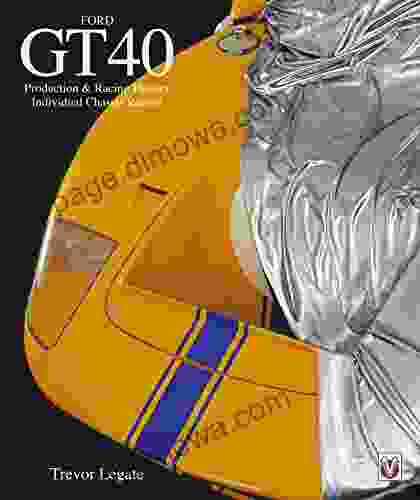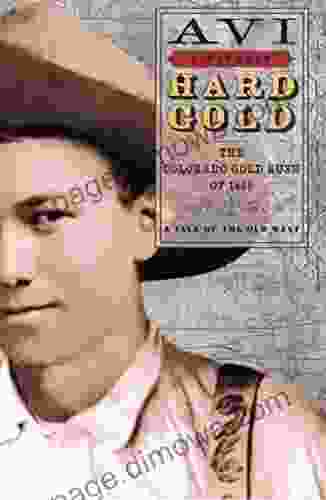Unlock the Secrets of Autoencoding in the Complex Domain: A Comprehensive Guide

Autoencoders, a powerful class of neural networks, have revolutionized the field of machine learning. They have found applications in a wide variety of tasks, including image and video compression, dimensionality reduction, and feature learning. However, traditional autoencoders are designed to work with real-valued data. When it comes to complex-valued data, such as images and signals with complex phase information, traditional autoencoders fall short.
Autoencoders in the complex domain overcome this limitation by explicitly modeling the complex structure of the data. They have been shown to achieve state-of-the-art results on a variety of complex-valued data tasks.
In this comprehensive guide, we will explore the world of autoencoding in the complex domain. We will start by introducing the basics of autoencoders and complex-valued data. Then, we will delve into the different types of complex-valued autoencoders and their applications. Finally, we will provide a step-by-step guide on how to train and use a complex-valued autoencoder.
5 out of 5
| Language | : | English |
| File size | : | 10147 KB |
| Text-to-Speech | : | Enabled |
| Screen Reader | : | Supported |
| Enhanced typesetting | : | Enabled |
| Print length | : | 361 pages |
An autoencoder is a neural network that learns to reconstruct its own input. It consists of two parts: an encoder and a decoder. The encoder compresses the input into a lower-dimensional representation, and the decoder reconstructs the input from the compressed representation.
The goal of an autoencoder is to learn a compressed representation of the data that is both informative and efficient. The compressed representation should capture the most important features of the data, while also being small enough to be computationally efficient.
Autoencoders have been shown to be effective for a variety of tasks, including:
- Image and video compression
- Dimensionality reduction
- Feature learning
- Anomaly detection
- Data denoising
Complex-valued data is data that has both a real and an imaginary component. This type of data is common in a variety of applications, including:
- Image processing
- Signal processing
- Medical imaging
- Radar systems
Complex-valued data can be represented as a vector of real numbers, or as a vector of complex numbers. When represented as a vector of complex numbers, the real and imaginary components are stored as separate elements of the vector.
Complex-valued autoencoders are a type of autoencoder that is designed to work with complex-valued data. They explicitly model the complex structure of the data, and have been shown to achieve state-of-the-art results on a variety of complex-valued data tasks.
There are a number of different types of complex-valued autoencoders, including:
- Complex-valued convolutional autoencoders
- Complex-valued recurrent autoencoders
- Complex-valued variational autoencoders
The type of complex-valued autoencoder that is best suited for a particular task will depend on the nature of the data and the desired results.
Complex-valued autoencoders have been used in a variety of applications, including:
- Image compression
- Signal processing
- Medical imaging
- Radar systems
- Speech recognition
In each of these applications, complex-valued autoencoders have been shown to achieve state-of-the-art results.
Training a complex-valued autoencoder is similar to training a traditional autoencoder. However, there are a few key differences that need to be taken into account.
- Choose the right type of complex-valued autoencoder. The type of complex-valued autoencoder that you choose will depend on the nature of the data and the desired results.
- Prepare the data. The data should be preprocessed and normalized before training the autoencoder.
- Train the autoencoder. The autoencoder can be trained using a variety of optimization algorithms.
- Evaluate the autoencoder. The autoencoder can be evaluated on a variety of metrics, such as reconstruction error and compression ratio.
Once the autoencoder is trained, it can be used to compress and reconstruct complex-valued data. The compressed representation can be used for a variety of tasks, such as feature learning and anomaly detection.
Autoencoders in the complex domain are a powerful tool for working with complex-valued data. They have been shown to achieve state-of-the-art results on a variety of tasks, including image compression, signal processing, and medical imaging.
In this guide, we have provided a comprehensive overview of autoencoding in the complex domain. We have introduced the basics of autoencoders and complex-valued data, and we have explored the different types of complex-valued autoencoders and their applications. We have also provided a step-by-step guide on how to train and use a complex-valued autoencoder.
We believe that autoencoders in the complex domain will continue to play an important role in a variety of applications. We encourage you to explore this exciting field and see for yourself the power of autoencoding in the complex domain.
5 out of 5
| Language | : | English |
| File size | : | 10147 KB |
| Text-to-Speech | : | Enabled |
| Screen Reader | : | Supported |
| Enhanced typesetting | : | Enabled |
| Print length | : | 361 pages |
Do you want to contribute by writing guest posts on this blog?
Please contact us and send us a resume of previous articles that you have written.
 Book
Book Novel
Novel Page
Page Chapter
Chapter Text
Text Story
Story Genre
Genre Reader
Reader Library
Library Paperback
Paperback E-book
E-book Magazine
Magazine Newspaper
Newspaper Paragraph
Paragraph Sentence
Sentence Bookmark
Bookmark Shelf
Shelf Glossary
Glossary Bibliography
Bibliography Foreword
Foreword Preface
Preface Synopsis
Synopsis Annotation
Annotation Footnote
Footnote Manuscript
Manuscript Scroll
Scroll Codex
Codex Tome
Tome Bestseller
Bestseller Classics
Classics Library card
Library card Narrative
Narrative Biography
Biography Autobiography
Autobiography Memoir
Memoir Reference
Reference Encyclopedia
Encyclopedia Qing Liu
Qing Liu R T Acron
R T Acron Rachel De Lahay
Rachel De Lahay Reemus Bailey
Reemus Bailey Florence Ramaiah
Florence Ramaiah Anne Reynolds
Anne Reynolds Peter Blackman
Peter Blackman Phil Huddleston
Phil Huddleston Jules Archer
Jules Archer Rhys Charles
Rhys Charles Peter Peterson
Peter Peterson Steve Chapple
Steve Chapple Sj Whitby
Sj Whitby Yuu Miyazaki
Yuu Miyazaki Sandy Landsman
Sandy Landsman Patrick Leigh Fermor
Patrick Leigh Fermor Minister Faust
Minister Faust Worlds Leading Entrepreneurs
Worlds Leading Entrepreneurs Richard Fox
Richard Fox Rajesh Jugulum
Rajesh Jugulum
Light bulbAdvertise smarter! Our strategic ad space ensures maximum exposure. Reserve your spot today!

 Ralph Waldo EmersonUnveiling "Wild Boy and the Black Terror": A Gripping Saga of Courage and...
Ralph Waldo EmersonUnveiling "Wild Boy and the Black Terror": A Gripping Saga of Courage and...
 Brandon CoxUnleash the Secrets: Dive into the Enchanting World of "The Dark Soul Vampire...
Brandon CoxUnleash the Secrets: Dive into the Enchanting World of "The Dark Soul Vampire... Fred FosterFollow ·5.3k
Fred FosterFollow ·5.3k Wade CoxFollow ·7k
Wade CoxFollow ·7k Ivan TurnerFollow ·3.9k
Ivan TurnerFollow ·3.9k Victor HugoFollow ·19k
Victor HugoFollow ·19k Eric NelsonFollow ·2.5k
Eric NelsonFollow ·2.5k Gage HayesFollow ·7.9k
Gage HayesFollow ·7.9k Anton FosterFollow ·18.1k
Anton FosterFollow ·18.1k Forrest BlairFollow ·8.8k
Forrest BlairFollow ·8.8k

 Norman Butler
Norman ButlerUnveiling the Legacy of New England Salmon Hatcheries and...
Journey back in time to...

 J.R.R. Tolkien
J.R.R. TolkienEmbark on a Literary Adventure with Oliver Twist: A...
Unveiling the Complex World of Oliver...

 Todd Turner
Todd TurnerEnter the Mesmerizing Realm of Snooker: A Journey of...
Get ready to embark on an...

 Richard Wright
Richard WrightElements of Plasma Technology: A Journey into the...
Prologue:...

 George Bell
George BellBarbarian: Forgotten Legends of the Germanic Peoples - A...
Step into a world of...

 Drew Bell
Drew BellMaster GCSE English with the Ultimate Guide: Letts GCSE...
Prepare with Confidence for Success in GCSE...
5 out of 5
| Language | : | English |
| File size | : | 10147 KB |
| Text-to-Speech | : | Enabled |
| Screen Reader | : | Supported |
| Enhanced typesetting | : | Enabled |
| Print length | : | 361 pages |








